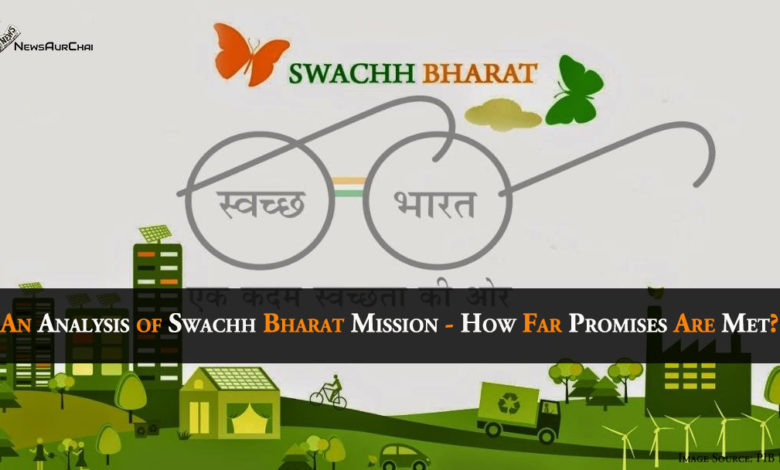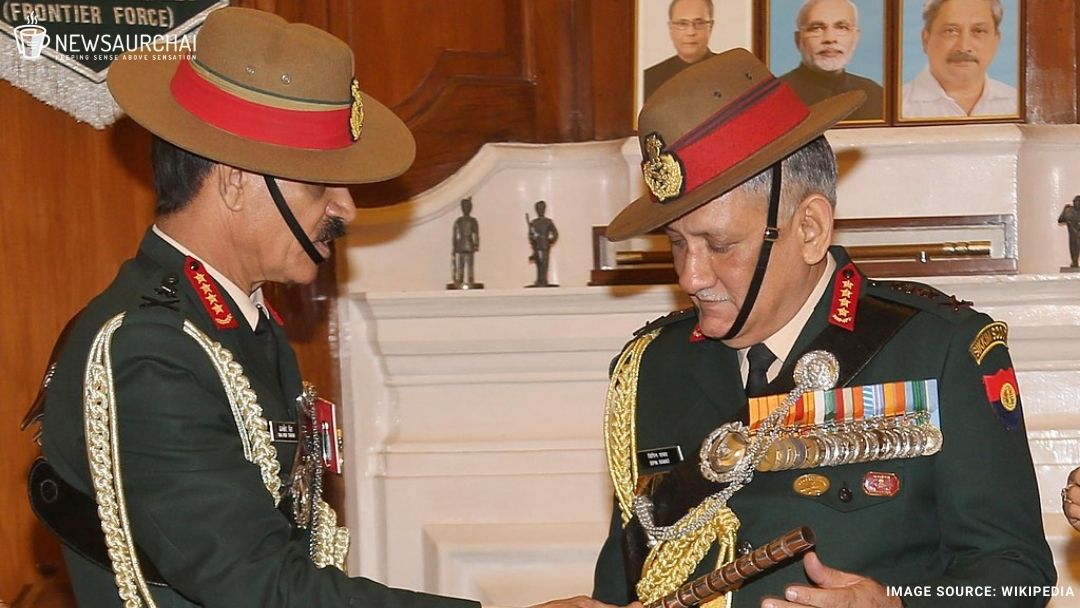An Analysis of Swachh Bharat Mission – How Far Promises Are Met?

We all are familiar with the Swachh Bharat Mission/Abhiyan. However, a glimpse at it would be better, Swachh Bharat Abhiyan or Clean India Mission is a nation-wide campaign in India for the set duration of 5 years (2014 to 2019) that proposes to clean up the streets, roads and infrastructure of India’s cities, towns, urban and rural areas. The main objectives of Swachh Bharat also include eliminating open excretion through the construction of household-owned and community-owned toilets and installing a liable mechanism of monitoring toilet use.
The campaign’s official name is in Hindi and interprets to “Clean India Mission” in English, its current status is Active, and it was launched by the Prime Minister Narendra Modi at Rajghat, New Delhi with the slogan “One step towards cleanliness.”
Till 2014, 600 million people, which accounts for roughly 60 per cent of the world’s population were following open defecation across the country–Out of which, 550 million were in rural India. This number has changed rather dramatically, as the public excretion number has decreased to 100 million as per the reports of early 2019. As many as 5,20,000 villages, 530 Districts and 25 States and Union Territories are open defecations free (ODF).
PM Modi, while addressing a gathering, stated that–The constant struggle of mothers and daughters because of lack of hygienic toilets stirred him, that made him take the pledge of Swachh Bharat from the ramparts of the Red Fort. In about 70 years of Independence, the scope of hygiene was nearly 40 per cent a few years back, which has improved to 98 per cent now. More than ten crore restrooms have been created in four-and-a-half years, and five lakh villages in 600 districts have freed themselves from defecation in the open whereby giving them a dignified life.
Local circles had led a yearly Swachh Bharat survey across India and the results show improvement in the cleanliness of the states in the country. The significant positive difference is being the number of citizens who believe that their neighbourhood and city have turned cleaner due to the Swachh Bharat Mission. This figure had grown from 67 per cent to 72 per cent within the span of a few years.
PM Modi said “Women safety and dignity was my prime motive behind announcing the Swachh Bharat Mission on August 15, 2014. It was because of the efforts made by the people of India, especially women, that the sanitation coverage in rural India, which stood at merely 39 per cent as of October 2014 even after 67 years of India’s Independence, has today crossed the 98 per cent mark in just over four years of the Swachh Bharat Mission.”
There has been a notable outgrowth of Swachh Bharat Mission at the roots level, both in the circumstances of health parameters as well as economic indicators. A study published by World Health Organisation (WHO) in August 2018 brought out that Swachh Bharat would have managed to keep proper maintenance of around 3,00,000 lives by 2019 and about 1,50,000 lives would be saved yearly consequently.
Setbacks of Swachh Bharat Mission
Despite all these figures, it is noted that in 10 states and 3 UTs, more than 50 per cent of government health centres in rural areas are without staff toilets. Among all states, Telangana is the worst with 86 per cent of health centres without staff toilets. The state has around 4,744 sub-centres in rural areas, and none of them has a staff toilet. However, the situation of its parent state Andra Pradesh is better when compared.
As per the report of WHO, primary sanitation facility at a health care centre should incorporate at least one toilet dedicated for staff, at least one sex-separated toilet with menstrual hygiene facilities, and at least one toilet available for people with limited mobility.
Overall, Kerala and Telangana have the highest per cent of government hospitals without sex-separated toilets (86 per cent each), which is followed by Andhra Pradesh, Uttar Pradesh and Gujarat. As per the reports, in 21 states and Union Territories, more than 50 per cent rural hospitals don’t have sex-separated toilets.
Yet another problem with hygiene is that more 26,360 sub-centres and 1,313 primary health centres in rural India that did not have a regular source of water as on March 31, 2018. Reports bring out that 45 per cent public health centres (PHCs) in Jharkhand are functioning without steady water supply, while in Nagaland and Manipur the figures are 44 and 43 per cent, respectively.
Besides the shortage of water and toilets, there is also an inadequacy in electricity, even when back in 2018 the government claimed to have achieved the arduous target of 100 per cent rural electrification. Under the Swachh Bharat Mission, Modi led BJP government had also promised the rural electrification; however, if we go by the reports, even this is not fulfilled yet, making the claims made by the government faulty.
What needs to be improved?
Nevertheless, the following stage of Swachh Bharat Mission presently needs to be connected to improving public health, decreasing plastic waste, developing local-level community engagement along with concentrating on the health of staffs in PHCs and its subsidiary units in rural areas across the country. Civic sense additionally provides some increase with when compared to previous years. The impact of the Swachh Bharat Mission on children is repeatedly evident in a survey of 2019, but the responsiveness of the community organisations has let down somewhat.
Though there is a significant improvement in the situation, the government needs to work more to justify its promised of Swacch Bharat ultimately. There was a slight decline in the responsiveness of the community organisations, but we can hope that it increases this year and lead to a more cleaner India. Moreover, though not a government initiative, but plogging is becoming a trend in India, with more people joining the same. Thus we can hope to see more awareness among the citizens and clearer India in 2021.





